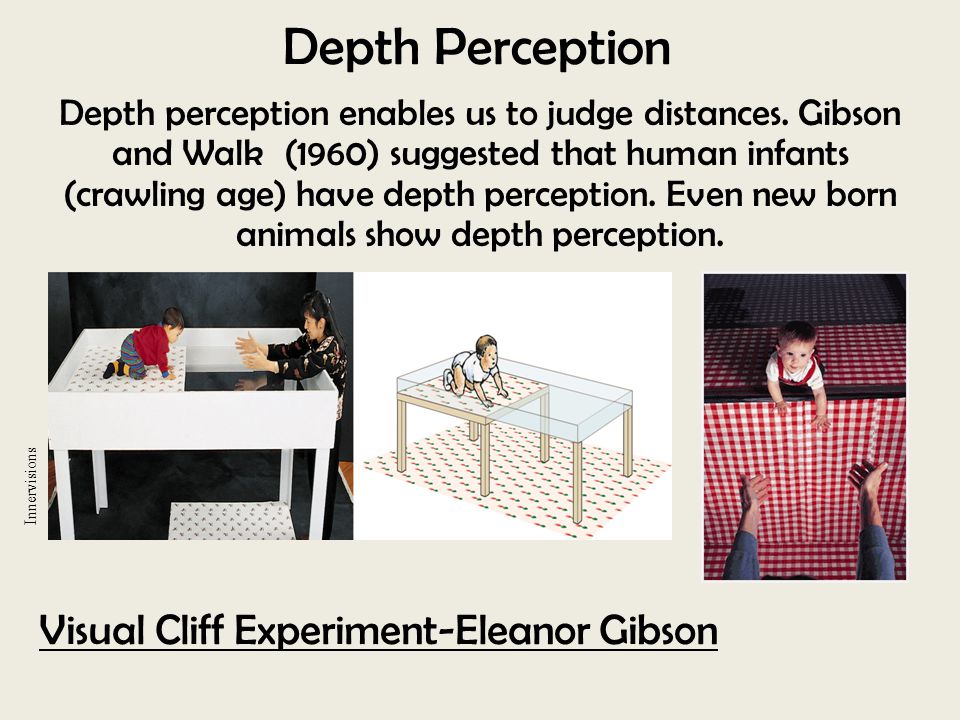Visual Cliff
Gibson and R.D. Walk developed the visual cliff test to use with human infants and animals. Earlier research had revealed that infants will respond to various depth cues even before they are able to crawl. Depth cues allow people to detect depth in a visual scene. These can include both such as relative size and overlap, or binocular cues such as retinal disparity. Gibson and Walk were interested in whether or not an infant's ability to perceive depth is a learned behavior or if it was, as they suspected, innate.
WATCH OUT FOR THE VISUAL CLIFF! ]., 8 C Walk, R. The 'visual cliff.' Scientific American, 202, 67-71. One of the most often told anecdotes in.

Gibson and Walk described their visual cliff apparatus as a large sheet of heavy Plexiglass supported a foot or more off the floor. On one side of the glass, a high-contrast patterned fabric is pressed up against the underside to make the glass appear solid.
The same material is laid on the floor below the glass, creating the visual illusion of a cliff. This allowed researchers to test infant perception while still ensuring the safety of their young subjects. It was also assumed that infants who still lacked depth perception would crawl happily to their caregivers without even noticing the apparent drop. Gibson and walk concluded that the ability to perceive depth emerges sometime around the age that an infant begins to crawl. The fear of heights, they suggested, is something learned later in infancy as gain experience with bumps, scrapes, and falls.
Understanding the Visual Cliff Initially, believed that perception of the visual cliff was a matter of physical and visual maturity. Babies could see the difference by the age of 8 months, while younger infants with less developed depth perception could not see the cliff.
Because 6-month-old children could be enticed to wiggle across the visual edge, while 10-month-old children refused to cross the threshold, it was assumed that the younger children had not yet developed depth perception while the older children had. Later research, however, has demonstrated that children as young as 3 months are able to perceive the visual cliff. When placed over the apparent 'edge,' their heart rates quicken, eyes widen, and breathing rates increase.
So if these infants can perceive the visual cliff, why would they be willing to crawl off what appears to be a straight drop down? The issue is that children of this age do not yet fully realize that the consequence of going over this visual cliff is potentially falling. This realization only comes later when the child begins to crawl and gains real experience with taking tumbles. Reference: Campos, J.J., et al. The emergence of fear on the visual cliff.
In Michael Lewis and Leonard A. Rosenblum (Eds.). The development of affect. New York: Plenum. (April 1960). The 'Visual Cliff'. Scientific American.
The visual cliff apparatus was created by psychologists and Richard D. Walk at to investigate in human and animal species. This apparatus allowed them to experimentally adjust the optical and tactical stimuli associated with a simulated cliff while protecting the subjects from injury. Venkatesh Shatruvu Telugu Mp3 Songs Free Download. The visual cliff consists of a sheet of that covers a cloth with a high-contrast pattern.